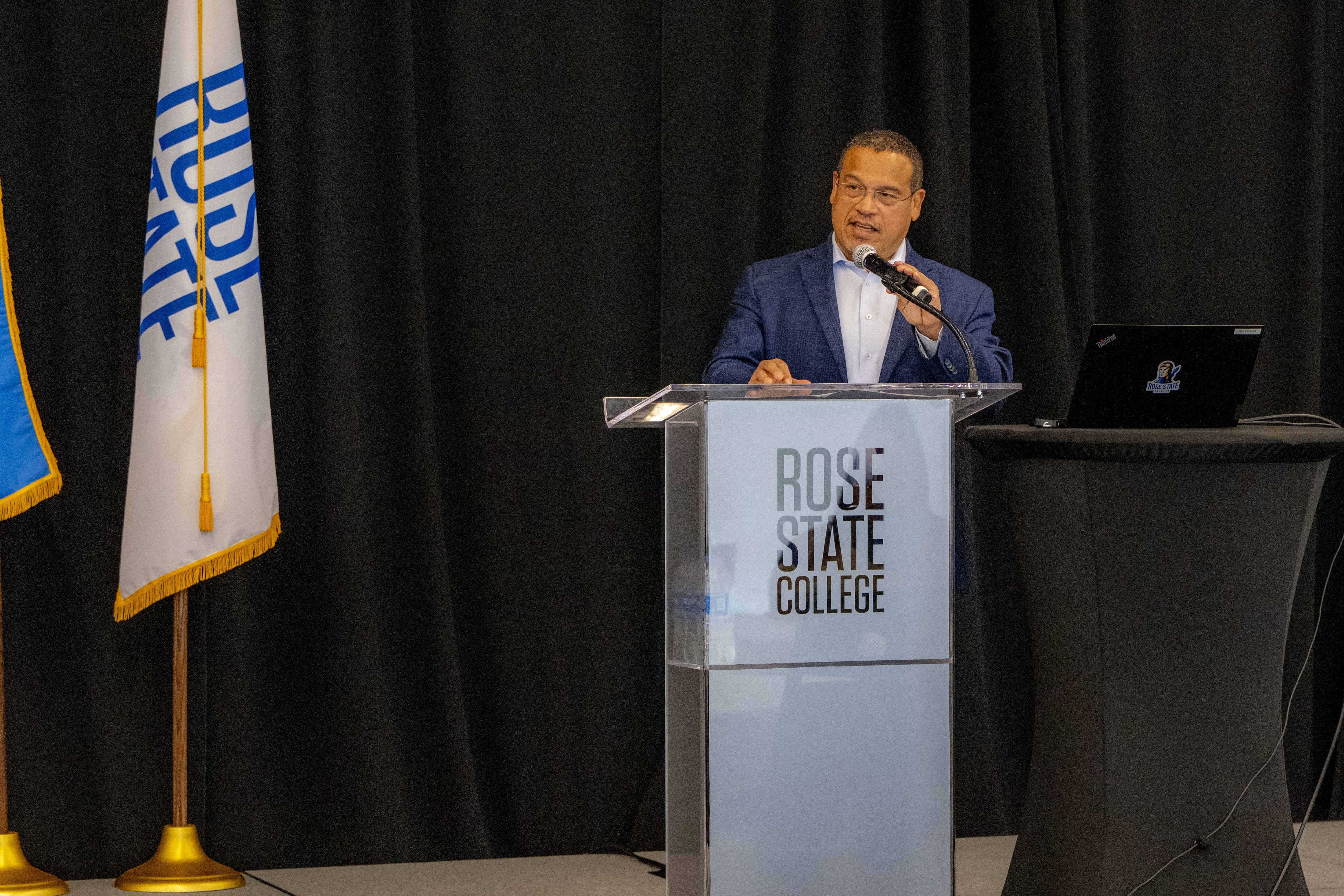- CIT 2323 Security+ Certification Preparation
- CIT 2563 Cryptography and Trusted Systems
- CIT 1533 Principles of Cyber Security
- CIT 1203 Script Programming
- CIT 2533 Ethics in Information Technology
- CIT 1503 Network+ Certification Preparation
- CIT 2053 Network Administration
- CIT 2553 Digital Forensics
- CIT 2603 Ethical hacking and Systems Defense
- CIT 2523 Information Security Management
CIT 2323 Security+ Certification Preparation
Course Length: This 3 credit hour undergraduate course runs for 16 weeks with 2.5 contact hours per week totaling 40 contact hours. Projects assigned during the course will require an estimated 2 times the amount of contact hours for an additional 80 hours bringing the estimated total class hours to 120.
Course Description: The student will learn the fundamentals of network security. Students will study security design and development.
Course Learning Objectives: The student will learn the fundamentals of network security. Students will study security design and development. The proper use of access control lists, firewalls, VPNs, and Intrusion Detection Systems.
Major Topics: Upon completion of Network Security, the student will be able to:
1. Demonstrate a basic knowledge of Network Security.
2. Demonstrate the ability to design and implement a secure network.
3. Demonstrate the ability to analyze and assess security breaches.
4. Auditing collections, tools and reporting. Peripheral Devices / Security Peripherals
5. Analyze business and security requirements for the end user
6. Design a security baseline
7. Configure security policies
8. Guards / cdsec / VPNs / Firewalls
9. Designing an IPsec Solution
10. Understand the security issues and limitations associated with accessing public and private networks
11. Implementing connectivity to a VPN
12. Routers / Switches / Gateways
13. IDSes, IPSes
14. Different Encryption methods - pros and cons
15. Demonstrate a basic knowledge of asynchronous vs. Synchronous
16. Demonstrate ability to use network mapping tools
17. Demonstrate ability to use network analysis tools
18. Identify and fingerprint various different network protocols
19. Analyze security requirements
20. Design a security solution
21. Adversaries and Threats
22. Motivations and Threats to system
23. Design a security solution
24. Create solutions for user distribution and resource distribution
25. Analyze network roles and responsibilities
26. Network Storage Devices
27. Mobile Devices
Method of Instruction: Lectures, class discussion, hands on projects for both individuals and groups, tests covering text and projects.
Course Assessment: The basic means of evaluation will be student scores on tests, lab assignments, projects and other assignments relating to the course material.
Grades for the course will be based on the following:
Two Examinations 45%
Homework 20%
Individual Projects 20%
Analyzing network traffic
Fingerprinting - Identifying network protocols
Attendance / Participation 15%
These scores will be equated to a semester score between 0 and 100. The final grade will be based on the standard A-F scale. Borderline scores will be considered for equating the next higher grade by the instructor, based on attendance, participation, and demonstrated effort.
CIT 2563 Cryptography and Trusted Systems
Course Length: This 3 credit hour undergraduate course runs for 16 weeks with 2.5 contact hours per week totaling 40 contact hours. Projects assigned during the course will require an estimated 1.5 times the amount of contact hours for an additional 60 hours bringing the estimated total class hours to 100.
Course Description: Students will be introduced to security problems in computer, basic encryption and decryption techniques. Secure encryption systems and cryptographic protocols and practices will also be presented.
Course Prerequisites: CIT 1613
Course Learning Objective: An understanding of basic concepts of computer security. Emphasis on encryption and decryption, and cryptographic protocols and practices.
Major Topics Covered: Upon completion of Computer Security the student will be able to:
1. Define secure
2. Identify attacks
3. Describe methods of defense
4. Examine cryptography
5. Evaluate secure programs
6. Identify protection in operating systems
7. Evaluate database security
8. Identify risk analysis
9. Describe the meaning of computer security
10. Identify attacks
11. Define methods of defense
12. Identify data encryption standards
13. Differentiate symmetric and asymmetric encryption systems
14. Describe public key encryption
15. Identify cryptographic hash functions
16. Analyze non-malicious program errors
17. Evaluate viruses and other malicious code
18. Describe targeted malicious code
19. Identify program threats
20. Identify database components
21. Evaluate database integrity
22. Describe sensitive data
23. Describe multilevel databases
24. Define security planning
25. Identify physical security
26. Identify characteristics of good security policy
27. Explain des
28. Explain RSA
29. Explain AES
30. Explain Diffie Hellman
31. Explain Merkle Hellman
32. Digital signatures
33. Md4, md5, sha1-3, one way functions, hash functions
34. Design principles
35. Secure programming
36. Malicious code
Method of Instruction: Lectures, class discussion, hands on projects for both individuals and groups, tests covering text and projects.
Course Assessment: The basic means of evaluation will be student scores on tests, lab assignments, projects and other assignments relating to the course material.
Grades for the course will be based on the following:
Two Examinations 45%
Homework 20%
Individual Projects 10%
Group Projects 10%
Attendance / Participation 15%
These scores will be equated to a semester score between 0 and 100. The final grade will be based on the standard A-F scale. Borderline scores will be considered for equating the next higher grade by the instructor, based on attendance, participation, and demonstrated effort.
CIT 1533 Principles of Cyber Security
Course Length: This 3 credit hour undergraduate course runs for 16 weeks with 2.5 contact hours per week totaling 40 contact hours. Projects assigned during the course will require an estimated 1.5 times the amount of contact hours for an additional 60 hours bringing the estimated total class hours to 100.
Course Description: The students will be introduced to a broad scope of information assurance principles and concepts that will build a strong foundation for later courses.
Course Learning Objective: An understanding of basic concepts of computer security. Emphasis on encryption and decryption, and cryptographic protocols and practices.
Major Topics Covered: Upon completion of Computer Security the student will be able to:
1. Define components of an information system
2. Describe the security investigation phase
3. Assess security analysis
4. Describe logical design
5. Describe physical design
6. Analyze physical security
7. Describe implementing security
8. Describe maintenance and change
9. Describe the history of information security
10. Identify components of an information system
11. Describe the systems development life cycle
12. Describe the security systems development life cycle
13. Describe the need for security
14. Differentiate threat types
15. Describe attack types
16. Describe law and ethics in information security
17. Describe certifications and professional organizations
18. Analyze risk management
19. Describe risk identification
20. Evaluate risk assessment
21. Identify risk control strategies
22. Identify information security policy, standards and practices.
23. Evaluate information security blueprints.
24. Describe security education, training and awareness.
25. Describe planning for continuity
26. Evaluate disaster recovery planning.
27. Describe law enforcement involvement.
28. Identify firewalls
29. Evaluate intrusion detection systems
30. Identify analysis tools
31. Describe cryptography and encryption based solutions
32. Identify protocols for secure communications
33. Describe interception of data
34. Describe project planning
35. Evaluate staffing needs
36. Describe credentials of information security professionals
37. Identify the iso network management model
38. Evaluate planning and risk assessment
39. Describe vulnerability assessment
40. Describe monitoring external and internal environments
41. Describe access controls, abac, mac, dac, lbac, rba
42. Describe cnss security mode
43. Describe the payment card industry data security standard
44. Describe auditing
45. Describe worksheets charts graphing spreadsheet function using excel
Method of Instruction: Lectures, class discussion, Hands on training in a computer lab environment, Case projects, Classroom tests covering the textbook and training exercises.
Course Assessment: The basic means of evaluation will be student scores on tests, lab assignments, projects and other assignments relating to the course material. These scores will be equated to a semester score between 0 and 100. The final grade will be based on the following scale: Semester scores will be equated to grades as follows
A 90-100
B 80-89
C 70-79
D 60-69
F 0-59
Borderline scores will be considered for equating the next higher grade by the instructor, based on attendance, participation, and demonstrated effort.
CIT 1203 Script Programming
Course Length: This 3 credit hour undergraduate course runs for 16 weeks with 2.5 contact hours per week totaling 40 contact hours. Projects assigned during the course will require an estimated 1.5 times the amount of contact hours for an additional 60 hours bringing the estimated total class hours to 100.
Course Description: The student will learn the basics of scripting. Students will be introduced to Python, JavaScript, CGI/Perl, PHP, VBScript and Windows Script Host. Students will also learn the art of web page interaction and data manipulation.
Course Prerequisites: CIT 1613
Course Learning Objective: An understanding of basic concepts of script programming logic, syntax, coding style, error handling and programmatic structures.
Major Topics Covered: Upon completion of Computer Security the student will be able to:
1. Design and manipulate data with JavaScript.
2. Describe and define the basics of java scripting.
3. Demonstrate CGI/Perl by creating an interactive web form
4. Create portable Perl scripts
5. Explain basic Perl functionality with packages and loadable modules
6. Demonstrate passing user data to a Perl script and returning to web page.
7. Create email forms using CGI
8. Interactively create JavaScript and view it on a web site
9. Demonstrate the process of passing data via CGI
10. Describe dynamic content that interacts with a database
11. Create web based software application
12. Define visual basic applications (VBA)utilizing Microsoft excel and other Microsoft applications
13. Demonstrate a knowledge of vbscript by creating a host application
14. Create an interactive web form
15. Define language independent
16. Create a script using the wscript object
17. Demonstrate the use of wscript.network object
18. Demonstrate wscript.shell object
19. Introduction to python numeric data types
20. Show examples of simple programs
21. Introduction to loops and simple functions
22. Introduction to turtle graphics
23. Provide an overview of common problem solving strategies
24. Understanding numeric expressions, variables, and assignment
25. Utilization of match functions
26. Simple selection statements
27. Random number generation
28. Boolean logic and expressions
29. String data types
30. String methods and operators
31. Simple cryptographic algorithms
32. Apply an introductory level of knowledge using CGI/Perl
33. Describe PHP basics for developing web based software applications
34. Describe vbscript and how it performs automated functions
35. Explain the use for windows script host
36. Describe encapsulation
37. Describe isolation as pertaining to programming
38. Create programs using least astonishment of both interface and code
39. Program using the principle of usability as pertaining to the user interface
Method of Instruction: Lectures, Class discussions, Classroom exercises, Software demonstrations, Online tutorials
Course Assessment: The final grade will be based on the following scale:
A 90-100
B 80-89
C 70-79
D 60-69
F 0-59
The basic means of evaluation will be on one or more exams, and four or more hands-on projects.
CIT 2533 Ethics in Information Technology
Course Length: This 3 credit hour undergraduate course runs for 16 weeks with 2.5 contact hours per week totaling 40 contact hours. Projects assigned during the course will require an estimated 1 times the amount of contact hours for an additional 40 hours bringing the estimated total class hours to 80.
Course Description: This course will be a study of legal issues, applicable court decisions, federal and state statutes, administrative rulings, legal literature, and ethical considerations relating to Internet law.
Course Prerequisites: None
Course Learning Objectives: The student will learn the fundamentals of Law as it pertains to the Internet and the Cyber Environment. Ethics is also discussed in great detail. Students will be presented with and evaluate current and past case students to determine the impact on today's world.
Major Topics: Upon completion of Cyber Law, the student will be able to:
1. Describe e-business and cyber law
2. Evaluate property issues in cyberspace
3. Describe jurisdiction
4. Identify cyber law
5. Identify copyrights
6. Describe business method patents
7. Analyze online contracting and licensing agreements
8. Define trademarks
9. Describe business issues in cyberspace
10. Identify internet and computer crime
Method of Instruction: Lectures, class discussion, hands on projects for both individuals and groups, tests covering text and projects.
Course Assessment: The basic means of evaluation will be student scores on tests, lab assignments, projects and other assignments relating to the course material.
Grades for the course will be based on the following:
Two Examinations 45%
Individual Projects 30%
Attendance / Participation 25%
These scores will be equated to a semester score between 0 and 100. The final grade will be based on the standard A-F scale. Borderline scores will be considered for equating the next higher grade by the instructor, based on attendance, participation, and demonstrated effort.
CIT 1503 Network+ Certification Preparation
Course Length: This 3 credit hour undergraduate course runs for 16 weeks with 2.5 contact hours per week totaling 40 contact hours.
Course Description: Introduction to Networks is an introductory course which covers the fundamental hardware and software concepts involved in a basic network. The standard open systems interconnect model, popular LAN topologies and network administration will be discussed.
Major Topics: Upon completion of Network Administration I the student will be introduced to:
1. Describe the fundamental components of a network
2. Identify and understand the responsibilities of a network administrator
3. Identify the various kinds of network topologies
4. Identify the essential elements of a local area network
5. Describe the purposes of the open systems interconnect model
6. Describe how local area networks are used and the various types of applications are utilized on a LAN
7. Identify the various types of media used on a LAN
8. Discuss LAN topologies and standards
9. Identify various hardware devices used on a LAN such as servers, workstations, hubs, printers, etc.
10. Describe the generic functions of LAN system software
11. Discuss software requirements and standards
12. Describe the specific functions of server and workstation software
13. Discuss the unique characteristics of various network operating systems
14. Identify the administrative details of installing local area networks
15. Describe the requirements for setting up users, groups, and security
16. Describe a LAN printing environment
17. List the requirements involved in establishing LAN security and backup
Method of Instruction: Lectures, class discussion, hands on projects for both individuals and groups, tests covering text and projects.
Course Assessment: Competency will be measured through the use of multiple assignments and multiple exams
35% Lab Assignment, 65% Exams
A 90-100
B 80-89
C 70-79
D 60-69
F 0-59
CIT 2053 Network Administration
Course Length: This 3 credit hour undergraduate course runs for 16 weeks with 2.5 contact hours per week totaling 40 contact hours.
Course Description: An introductory course in the installation and use of a local area network. After installing the hardware and network software, the student will then utilize various application programs on the network. Network terminology, security, and management issues will be studied.
Major Topics: Upon completion of Network Administration I the student will be introduced to:
1. Differentiate between server and client
2. Install server and client software
3. Configure and manage drivers and driver signing
4. Restore and backup system and user data
5. Configure and manage user profiles and desktop settings
6. Configure and manage Internet Information Services (IIS)
7. Configure and manage local and group user accounts
8. Configure file system permissions
9. Monitor and optimize server performance
Method of Instruction: Lectures, class discussion, hands on projects for both individuals and groups, tests covering text and projects.
Course Assessment: The basic means of evaluation will be student scores on tests, lab assignments, projects and other assignments relating to the course material. These scores will be equated to a semester score between 0 and 100. The final grade will be based on the standard A-F scale. Borderline scores will be considered for equating the next higher grade by the instructor, based on attendance, participation, and demonstrated effort.
CIT 2553 Digital Forensics
Course Length: This 3 credit hour undergraduate course runs for 16 weeks with 2.5 contact hours per week totaling 40 contact hours. Projects assigned during the course will require an estimated 1.5 times the amount of contact hours for an additional 60 hours bringing the estimated total class hours to 100.
Course Description: Students will gain practical knowledge on how to conduct digital investigations and preserve evidence that stands up to inquiries.
Course Prerequisites: CIT 1533
Course Learning Objective: An understanding of basic concepts of Digital Forensics.
Major Topics Covered: Upon completion of Digital Forensics the student will be able to:
- describe computer forensics
- identify file systems.
- describe data recovery.
- examine data structures.
- evaluate computer forensics software
- identify digital evidence
- evaluate data-hiding techniques
- identify image files
- describe investigation reporting
- describe computer forensics
- identify file systems.
- describe data recovery.
- examine data structures.
- evaluate computer forensics software
- identify digital evidence
- evaluate data-hiding techniques
- identify image files
- describe investigation reporting
- identify digital evidence
- evaluate data-hiding techniques
- identify image files
- describe investigation reporting
- identify file systems
- differentiate operating system’s disk structure
- describe operating system’s boot processes
- analyze computer forensics software
- evaluate computer forensics software needs
- describe the use of command-line forensic tools
- identify computer forensics hardware
- identify digital evidence.
- evaluate digital signatures
- describe cataloging and storing digital evidence
- describe securing a computer incident or crime scene
- define data acquisition
- identify the best acquisition method
- differentiate data acquisition tools
- define computer forensic analysis
- identify digital intelligence computer forensics tools
- describe data-hiding techniques
- describe Internet fundamentals
- identify e-mail crimes and violations
- differentiate specialized e-mail computer forensics tools
- define image files
- describe data compression
- identify image file headers
- identify copyright issues with graphics
- describe the importance of reports
- define procedural and evidence rule requirements
- identify types of reports
- demonstrate documenting a report
Method of Instruction: Lectures, class discussion, hands on projects for both individuals and groups, tests covering text and projects.
Course Assessment: The basic means of evaluation will be student scores on tests, lab assignments, projects and other assignments relating to the course material.
Grades for the course will be based on the following:
Discussions: 10%
Two Examinations 30%
Lab Assignments 60%
These scores will be equated to a semester score between 0 and 100. The final grade will be based on the standard A-F scale. Borderline scores will be considered for equating the next higher grade by the instructor, based on attendance, participation, and demonstrated effort.
CIT 2603 Ethical hacking and Systems Defense
Course Length: This 3 credit hour undergraduate course runs for 16 weeks with 2.5 contact hours per week totaling 40 contact hours. Projects assigned during the course will require an estimated 1.5 times the amount of contact hours for an additional 60 hours bringing the estimated total class hours to 100.
Course Description: This class covers best computer-security practices and industry standards to deter attacks and better defend networks.
Course Prerequisites: CIT 1533
Course Learning Objective: An understanding of basic concepts of Ethical Hacking and Systems Defense
Major Topics Covered: Upon completion of Information Security Management, the student will be able to:
- describe and utilize Security Auditing and Penetration Testing tools.
- recognize and discuss HIPAA Security Regulations.
- differentiate virus outbreaks.
- recognize Cyber Extortion
- explain network architecture,
- differentiate port scanners,
- discuss and explain incident reconstruction,
- diagram the discovery.
- explain wireless approaches,
- describe and recognize existing security,
- differentiate virus outbreaks,
- design an assessment process.
- create a pilot test
- create and maintain policies
- define industrial espionage
- discuss executive fraud
- discuss cyber extortion
- analyze wireless traffic
- Metasploit Framework
- Armitage
Method of Instruction: Lectures, class discussion, hands on projects for both individuals and groups, tests covering text and projects.
Course Assessment: The basic means of evaluation will be student scores on tests, lab assignments, projects and other assignments relating to the course material.
Grades for the course will be based on the following:
Discussions: 10%
Two Examinations 30%
Lab Assignments 50%
Attendance 10%
These scores will be equated to a semester score between 0 and 100. The final grade will be based on the standard A-F scale. Borderline scores will be considered for equating the next higher grade by the instructor, based on attendance, participation, and demonstrated effort.
CIT 2523 Information Security Management
Course Length: This 3 credit hour undergraduate course runs for 16 weeks with 2.5 contact hours per week totaling 40 contact hours. Projects assigned during the course will require an estimated 1.5 times the amount of contact hours for an additional 60 hours bringing the estimated total class hours to 100.
Course Description: This course examines managerial aspects of computer security and risk management for enterprises. The student will acquire information for accreditation, procurement, extension and operation principles for secure computing systems.
Course Prerequisites: CIT 1533
Course Learning Objective: An understanding of basic concepts of Information Management, Risk Management, and the managerial aspects of computer security
Major Topics Covered: Upon completion of Information Security Management, the student will be able to:
- Evaluate contingency planning
- Describe information policies
- Describe information security practices
- Identify information security management models
- Explain, identifying, assessing and controlling risk
- Evaluate information security protection mechanisms
- Evaluate Computer Emergency Response Teams
Method of Instruction: Lectures, class discussion, hands on projects for both individuals and groups, tests covering text and projects.
Course Assessment: The basic means of evaluation will be student scores on tests, lab assignments, projects and other assignments relating to the course material.
Grades for the course will be based on the following:
Discussions: 20%
Two Examinations 50%
Homework 30%
These scores will be equated to a semester score between 0 and 100. The final grade will be based on the standard A-F scale. Borderline scores will be considered for equating the next higher grade by the instructor, based on attendance, participation, and demonstrated effort.



